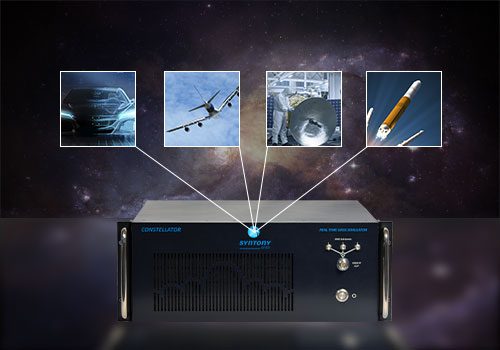Identifying the right constellation(s)
One of the first things to consider when choosing a GNSS simulator is the type of signals you will be simulating. There are several different GNSS constellations available, and the main ones are the following:
- GPS
- GLONASS
- Galileo
- BeiDou
- QZSS
- IRNSS
In addition to this, many other systems can improve the accuracy of the PVT data computed by receivers, like Augmentation Systems (SBAS, GBAS) or even complementary LEO constellations, like Xona.
Not all simulators support all of these systems, and if you will be testing a receiver that uses more than one of them, you will need to choose a simulator that supports all of the systems at once.
Moreover, each of those constellations or PVT data source broadcasts on multiple data packs, on various bandwidths. These bands provide a different kind of information directly impacting the accuracy of PVT, but at the cost of more computation, and power consumption. As an example, the Galileo constellation emits up to 10 different signals in 4 bands:
- L1
- E5a & b
- E6
Defining the level of realism
Another important consideration is the level of realism you require. Some GNSS simulators are designed to provide a simplified representation of the signals while others are designed to simulate the PVT data and conditions that the receiver would experience in real-world scenarios. If you require a high level of realism, you will need to choose a simulator that is capable of accurately simulating the signals and conditions that the receiver will encounter, like Syntony’s Constellator™.
The specific features offering high realism are the following:
- Ionospheric models
- Satellite lobes (for space simulation)
- Multipath simulation
- Extreme dynamic trajectories, for space simulation
- CRPA simulation
Matching the performance
Another factor to consider is the performance level of the simulator. Some simulators are designed for basic testing, while others are designed to provide high-accuracy and high-precision testing with complex interactions with other tested equipment. If you require multiple constellations and bands simulation, it is important to choose a simulator with sufficient computation power to achieve it.
Additionally, the specific Hardware-in-the-loop (HWIL or HIL) testing configuration requires powerful simulators with very low latency, to simulate in real-time the GNSS environment of a tested receiver from the PVT data provided in real time.
Allowing flexibility and scalability
Flexibility and scalability of the simulator are very important aspects to consider as well. Some simulators are designed for specific applications and are not easily adaptable to new scenarios or environments. Others are more flexible and can be easily configured to simulate different scenarios or environments, even remotely concerning the Constellator™. If you have a wide range of test scenarios or environments, it is important to choose a simulator that is flexible and scalable.
To learn more about our GNSS simulator’s capacities and offers, feel free to contact us or visit the Constellator™ product page.
